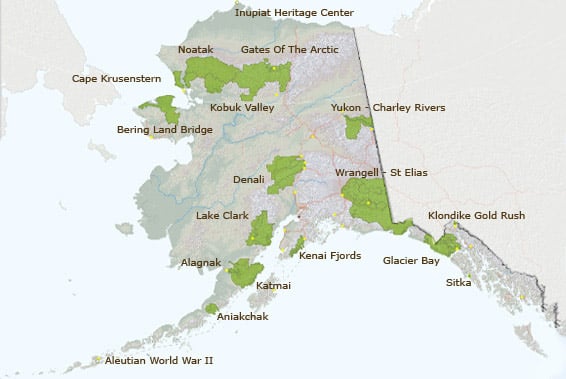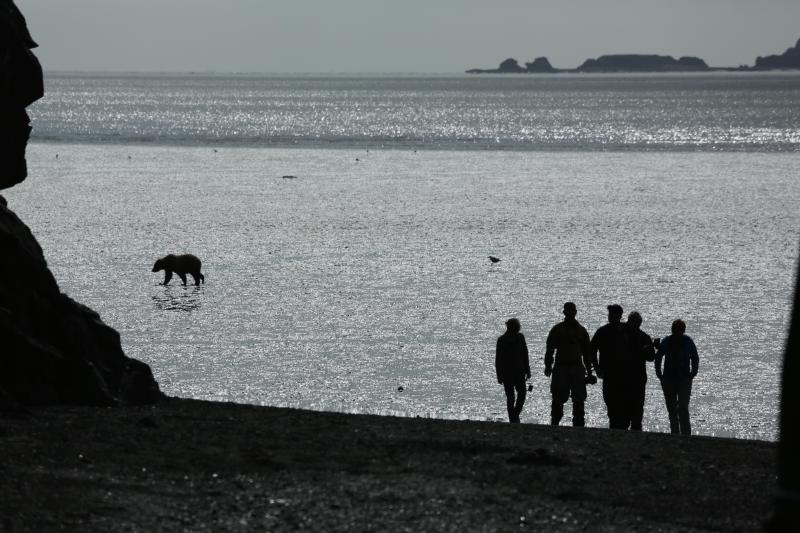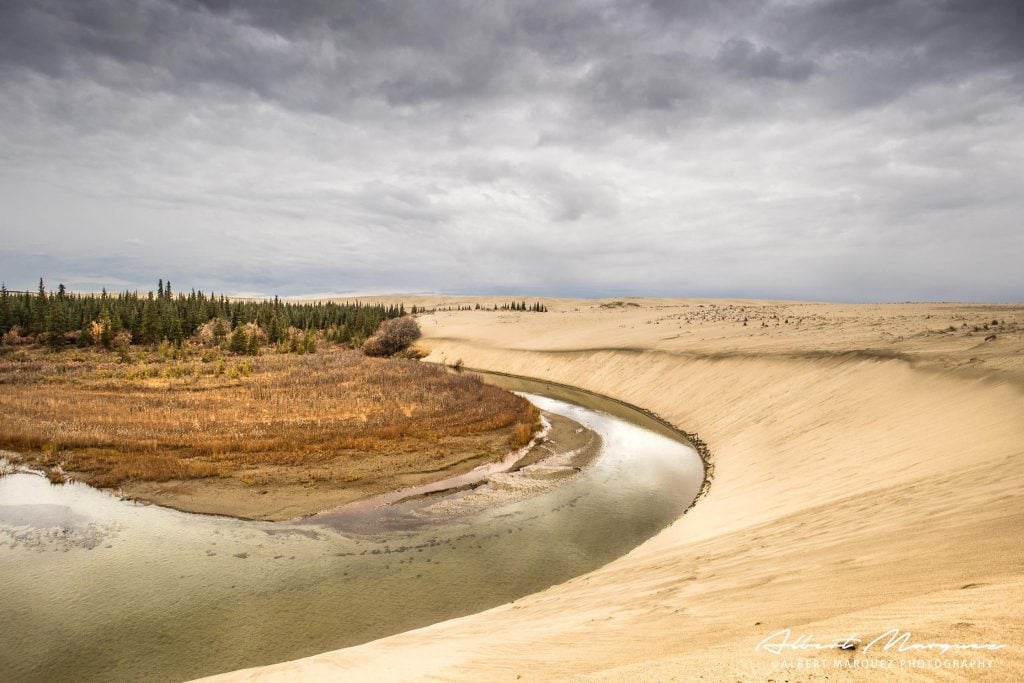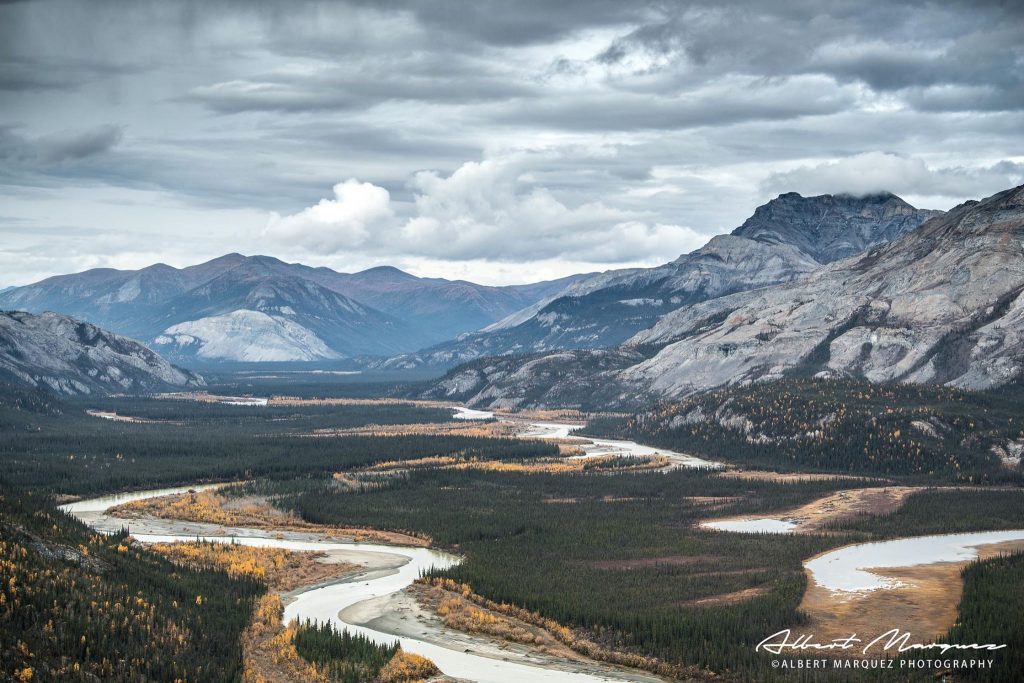According to the 2016 visitation statistics, over 11.3 million people visited the Great Smoky Mountains National Park, nearly double the number that visited the second-most visited Grand Canyon.
By contrast, fewer than 50,000 people combined made the trek to visit the three least-visited national parks. Whether you are looking for a unique and uncrowded wilderness adventure, or you are working on visiting all of the National Parks, the diverse splendor of Lake Clark, Kobuk Valley, and Gates of the Arctic National Parks should be on your list.

Map showing Alaska’s National Parks and Monuments (courtesy of NPS)
Alaska is home to eight National Parks and twenty-four official National Units. Most are not on the road system. Because of their remote locations and travel logistics, they can be daunting to try to visit. But if you have traveled to Alaska, getting to see some of these far-flung national treasures will give you an unequal appreciation of the diverse beauty and natural wilderness that our northern-most state holds in her boundaries.
Lake Clark, Kobuk Valley, and Gates of the Arctic National Parks are not accessible by road, so access by bush planes that are able to land on the sand bars along river edges provides visitors the ability to choose prime and isolated locations to explore.

Bear watching at Chinita Bay in Lake Clark NP (Photo by NPS/Jim Pfeiffenberger)
Lake Clarke National Park and Preserve encompasses over 4 million acres of land along the Aleutian Range and the Alaska Range on the west side of Cook Inlet. Lake Clark includes two active volcanoes: Mount Redoubt and Mount Iliamna.
Dick Proenneke spent nearly 30 years living alone in a log cabin he built on the shore of Twin Lakes within what is now the park boundary. His cabin and homestead were left to the National Park Service when he died in 2003 and still stand as a testament to his craftsmanship.
Lake Clark National Park provides spectacular bear-watching during the summer months, particularly along the Silver Salmon River. Unlike Katmai National Park, Lake Clark bear viewing is not controlled by NPS, giving a unique and wild experience to visitors.
The park is about an hour and a half flight from Anchorage by bush plane or can be accessed on the east side by boat from the Cook Inlet.
Kobuk Valley National Park is 25 miles north of the Arctic Circle, and famous for its caribou herds and sand dunes. According to a recent visitor, the landscapes of Kobuk Valley NP are “like the Sahara Desert was dropped into Alaska”, and not what most visitors would expect from northwestern Alaska.

Dune field at Kobuk Valley NP (Photo by Albert Marquez)
The broad valley of the Kobuk River that borders the Brooks Range is covered with glacial drift, or grit and sand left behind after the glaciers from the last ice age ground up the underlying rocks.
As the glaciers melted 14,000 years ago, the sediment was left in piles along the valley bottom. Subsequent winds have piled the grit and white sands into three spectacular active sand dune fields that cover over 200,000 acres of landscape.
For the past 9,000 years, people have hunted the massive caribou herds as they migrate across the dunes and rivers on their way to and from the summer tundra grounds. Archeological research in the Kobuk Valley has discovered fascinating details of ancient arctic life and cultures.
The park is accessed by bush plane from either the village of Kotzebue or village of Bettles, both of which have commercial flights from Anchorage. The Northwest Heritage Center in Kotzebue acts as NPS headquarters for the park.
Gates of the Arctic National Park and Preserve is the northernmost National Park in the US and was the least visited National Park in the US in 2016 with only 10,000 visitors. Only a few operators are permitted within Gates of the Arctic, so when you visit, you will likely be the only humans for hundreds of miles in any direction.
The park is well over 8.5 million acres, slightly larger than the country of Belgium, and includes parts of the Brooks Range and Noatak Wilderness Area.

Brooks Range and Gates of the Arctic National Park (Photo by Albert Marquez)
Caribou, muskoxen, bears, wolves, wolverines, and a huge variety of birds can be viewed in the Park. In the 1930s, conservationist Robert Marshall wrote of the area “No sight or sound or smell or feeling even remotely hinted of men or their creations. It seemed as if time had dropped away a million years and we were back in a primordial world.”
Gates of the Arctic remains much as Marshall experienced it. There are no roads or trails in the park, only natural untouched landscapes and ecosystems. As with Kobuk Valley NP, access is by bush plane from either Kotzebue or Bettles.
Both Kobuk Valley and Gates of the Arctic are extremely remote and require special planning for logistics and weather issues. Weather north of the Arctic Circle can be quite unpredictable year-round, and the wise traveler should allow plenty of extra time (at least 2-3 extra days) and invest in trip insurance.
There are no ranger stations or facilities in the parks, and emergency services are not easily available, so visitors should plan carefully and bring everything they will need with them. Backcountry safety guidelines and minimum impact camping to care for the fragile ecosystems and wildlife are critical.
If you’re looking for a great way to reduce the burden of logistics and travel planning, consider using a local tour service, such as Planet Earth Adventures to help plan your dream trip.
Planet Earth Adventures has done many Alaska National Park tours, including one that hit six Parks (Glacier Bay, Katmai, Lake Clark, Kobuk Valley, Gates of the Arctic, and Wrangell St. Elias) in one fantastic adventure tour. Trip leaders and photographers Albert Marquez and Scott Slone can also help you capture the perfect photographs during your adventures.

Why would a website like RV life have an article about three national parks that cannot be accessed with an RV, or that you can even get close to, with an RV. Basically “extreme tourist” parks.
Enjoyed the article however, didn’t realize there were national parks like this, but it really isn’t RV related.
Hi Charles- You are correct, you cannot take an RV to these national parks. But if you are someone who has made the long trip to Alaska, or someone who is trying to visit all the National Parks (as many RVers are), then it is something to consider doing! The vast majority of Alaska is not accessible by roads, so if you are truly planning a trip to see the 49th state, I recommend investing in an off-road-system adventure to fully experience it!
I support your comment Charles! My thoughts too.
Both Charles and TC Wait have valid points. Although I’ve traveled to Alaska, I’m still looking forward to getting my trailer west of the Mississippi.
John
There is no such thing as too much information for traveling as far as I’m concerned.!. Although I may live and travel in an RV I really appreciate reading about adventures away from “home base ” since the reason I live foot loose and fancy free is to experience everything life has too offer! Keep it coming and broaden our traveling perspectives!
Nothing says you can’t take an RV trip TO Alaska then park it for a few days for a more rustic experience. I live on the East coast so that trip would. be of interest to me. Thanks for the info.
I feel the same way as Elaine but also see the point of Walt , Charles , John and RVnChick but if I could go as far back as 37 years ago I think I would not have a problem doing these three.
Now at 67 years of age, where parts of me do not flex, stand still or walk like the days of long ago I know the pains of age and past military battles and the pain of those battles first hand.
Like the Clint said in his Dirty Harry movies “” Every man got to know his limitations” …I sure do and life is made of attempts, heart, accomplishments and dreams…if you can then go for it and if you can’t then dream about it but follow your dream one way of another!
See these now, as of 2018 Murkowski and Zinke etc have declared all out war on the Parks, and Alaska in particular. She has decided that the 800 year old trees of the Tongass Park should be cut and sold, and no one seems able to stop her greed and destruction. Alaska—vote her OUT and find s9me one who actually cares. The REST of the Parks are also in grave danger from greed— mining, logging, oil drilling, development. We ALL pay for these, we ALL shoud be able to enj9y them, yet a.few.greedy pols and their big money donors are.deciding this in dark of night closed door sessions. Wake up!!! Fight for these amazing places!
Along the same lines, I also am trying to see parks and monuments in the 4 corner states. Utah has some that are under attack to be shrunken or mined, and in my home state of AZ a couple of monuments have been eyed by the administration for like consideration. Also a 67 year old, I wonder and worry about what’s being left for our grandkids. One way to fight back against all of nature being ruined is to support a sensible enviromental organization. For me that’s the Nature Conservancy but there are many others to consider.
I am with you Judith. See what you can before it is ruined.
This is great information. RV related info would be of greater value to me. Can we find a way to build an RV road to these places?